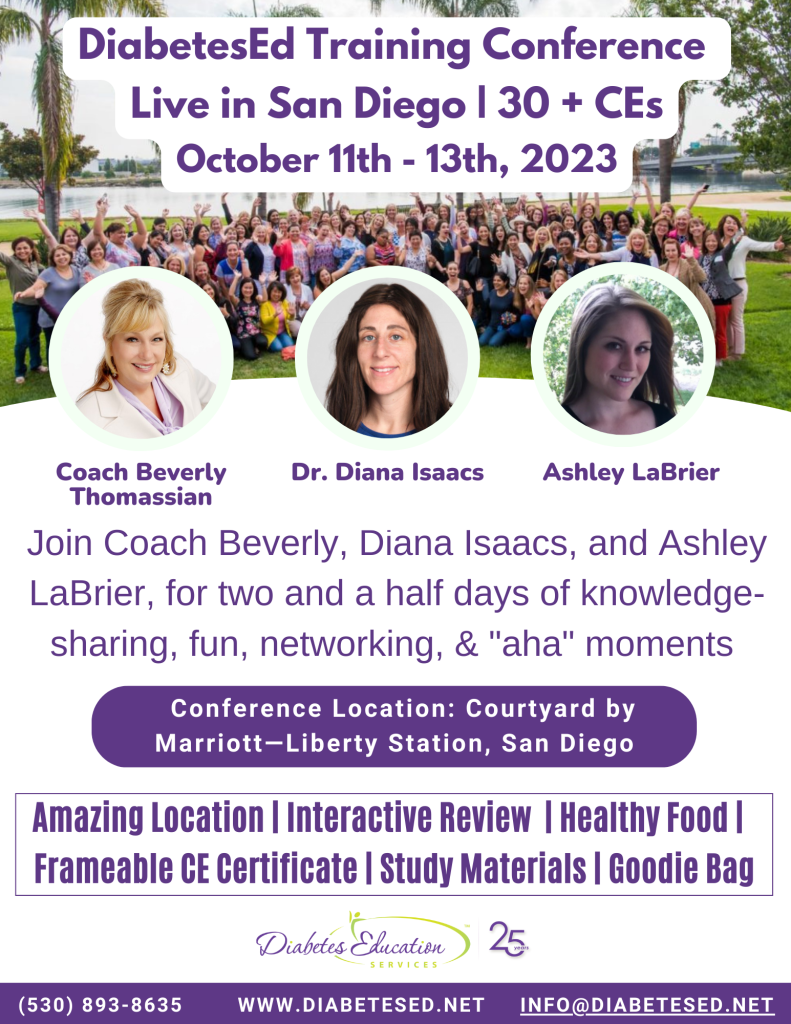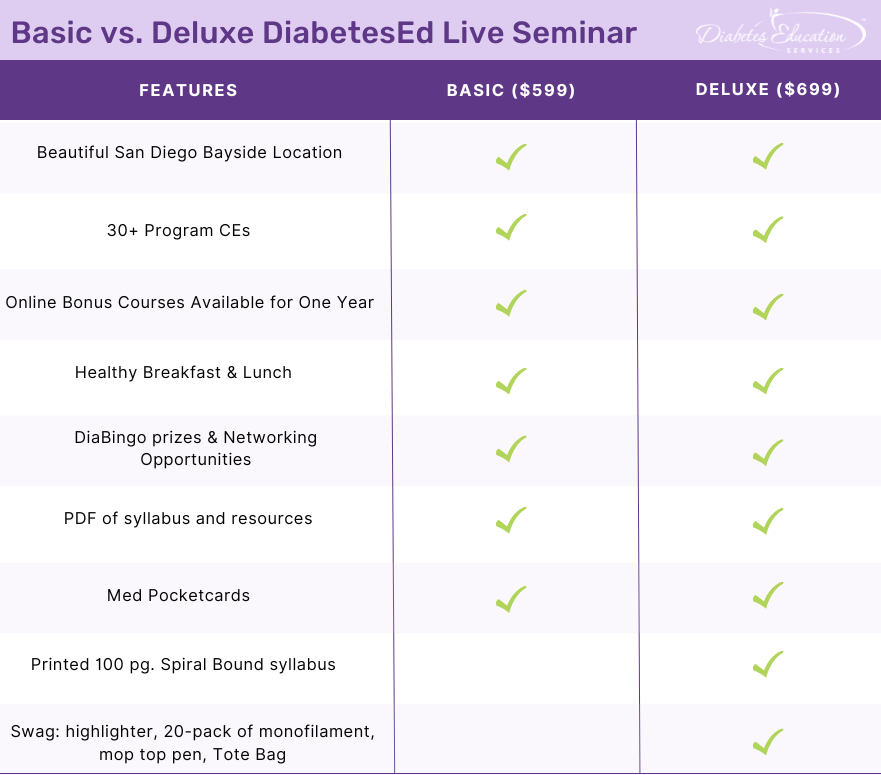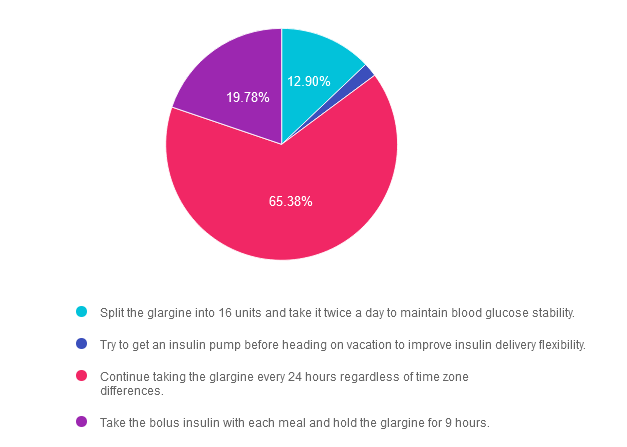Question of the Week | G-POEM for Gastroparesis?

JR lives with type 1 diabetes and severe gastroparesis, despite maintaining an A1C of less than 7% for the past few years. The endocrinologist referred JR to a GI specialist, who recommended a surgical procedure called a Gastric Peroral Endoscopic Myotomy, G-POEM, to address JR’s longstanding gastroparesis.
JR asks what you think about this intervention. What is the best response?
- It sounds like you are worried about the effectiveness and risks of this procedure. Is that right?
- Tell me more about what your GI doctor told you about this procedure.
- I know you are frustrated, but the primary treatment for gastroparesis is low fiber meals.
- Usually, gastroparesis improves as your A1C reaches target so I would wait and see if things improve.
Click Here to Test your Knowledge
Want to learn more about the GI System and Diabetes?
From the Gut to the Butt – Exploring the GI System FREE Webinar
Now Recorded & Ready to Watch

Coach Bev invites you to join this 60 minute webinar that covers gastrointestinal health from top to bottom. Topics include; fatty liver disease diagnosis and treatment, intestinal complications associated with diabetes, keeping the microbiome healthy, and more. Join us to explore the magnificent wonders of diabetes and the gut.
Getting to the Gut Topics:
- From the Mouth to Intestines: Periodontal disease, Gastroparesis, Fatty liver disease, pancreas disorders
- Intestine as an Endocrine Organ & Bacterial Host
- NASH Treatment Options including lifestyle and pharmacotherapy
- State the relationship between gut health, microbiome and diabetes and inflammation
- Describe 3 strategies to get our microbiome back to better health.
Can’t make it live? No worries. We will send post the recorded version to the Online University within 24 hours of the broadcast
Instructor: Beverly Thomassian RN, MPH, CDCES, has been Board Certified in Advanced Diabetes Management for over 20 years. She is an Associate Clinical Professor at UCSF, a working educator, and a nationally recognized diabetes expert. She has a Master’s Degree in Public Health from UCLA, with a focus on behavioral health and education.
All hours earned count toward your CDCES Accreditation Information
Sign up for Diabetes Blog Bytes – we post one daily Blog Byte from Monday to Friday. And of course, Tuesday is our Question of the Week. It’s Informative and FREE! Sign up below!
The use of DES products does not guarantee the successful passage of the diabetes certification exams. CBDCE & ADCES does not endorse any preparatory or review materials for the certification exams, except for those published by CBDCE & ADCES.
How Much insulin to Cover for Allulose? The Answer might Surprise you.
JR lives with type 1 diabetes and is excited to eat a stack of blueberry pancakes with a new type of maple syrup sweetened with allulose. The syrup label reads that there are 28 grams of carbs in 2 Tablespoons of Zero Sugar Maple syrup. JR adds up the total carbs in the pancakes and syrup, and takes 6 units of bolus insulin (4 for the pancakes and 2 units for the syrup). Within a half hour, JR realizes their blood sugar is dropping fast and grabs some glucose tabs to treat the sudden low. Trying to figure out what went wrong, JR double confirms the nutrition in the pancakes and then takes a closer look at the Maple Syrup label.
Is the Maple Syrup to blame for the Unexpected Low Blood Sugar?
Looking at the label, JR confirms that there are 28 gm of carbs per serving of this unique maple syrup and 26 of those carb grams come from Allulose. Allulose is a low-calorie sugar that is Generally Recognized As Safe (GRAS) approved by the FDA in 2022. Allulose is considered a rare sugar found naturally in figs, raisins, wheat, maple syrup, and molasses or it can be commercially produced and added to foods. It’s roughly 70% as sweet as sugar and it tastes very similar. Allulose is hardly digested or absorbed, so it provides very few calories – approximately 0.4 calories per gram, compared with 4 calories per gram in table sugar.
Because very little of ingested allulose is absorbed, the impact on post-meal glucose levels is negligible.

Allulose labeling Can Cause Confusion for People Matching Insulin to Carbs
In 2019, US Food and Drug Administration (FDA) issued guidance, allowing food manufacturers to exclude allulose from total and added sugar counts on Nutrition and Supplement Facts labels. Like sugar alcohols and dietary fiber, allulose still counts towards total carbohydrates on the nutrition label.
The fact that allulose hardly raises blood sugar may lead people who match insulin to carbs to take more insulin than needed.
FDA Labeling Rule for allulose:
• Not included in “Total Sugars” or ”Added Sugars”
• Included in Total Carbohydrates
• Calories calculated with 0.4 kcals/gram
• Must be in the ingredient list
Take home message for People Counting Carbs for Accurate Insulin Dosing
Look on labels to see if allulose is listed under carbohydrates or included in the ingredient list. If it is, subtract allulose carbs from the total carbs to get an accurate carbohydrate measurement.
For other people, allulose may be a sweet-tasting alternative to sugar that provides few calories and doesn’t raise blood sugar.
CDCES Deluxe Prep Bundle
30+ Online Courses + Bonus Items | 50+ CEs
Beverly has custom-designed this course bundle to prepare you for your CDCES Exam. This bundle includes our CDCES Online Prep Bundle (featured above) plus the ADCES (formerly AADE) Review Guide – 6th Edition. This bundle includes Levels 1 through 3 (AKA Boot Camp), toolkits, plus the ADCES Review Guide.
Included in this bundle is:
- Level 1 focuses on the fundamentals and introduces each topic area for the exam.
- Level 2 deep dives into the ADA Standards of Care,
- Level 3 AKA Boot Camp is a more accelerated level that focuses on test simulation for finding the best answer to get you to the finish line of your study path.
- Technology Toolkit which gives information on pumps, sensors, and calculations,
- Test Taking Toolkit includes over 220 practice questions for test simulation plus a webinar where Coach Beverly provides test-taking tips based on her experience taking the certification exam six times.
- ADCES Review Guide for the Diabetes Care and Education Specialist Exam – 6th Edition – The ADCES Review Guide is a fantastic independent study tool and comprehensive resource for the Diabetes Care and Education Specialist Exam. This book includes 475+ multiple-choice questions and strategies for preparing for and taking the exam with an answer key with rationales for all questions!
- Medication PocketCard – Our four-sided medication accordion Pocketcards were designed by Coach Beverly Thomassian to assist in clinical practice and exam preparation.
- Tote Bag
Sign up for Diabetes Blog Bytes – we post one daily Blog Byte from Monday to Friday. And of course, Tuesday is our Question of the Week. It’s Informative and FREE! Sign up below!
FREE Resources & Webinars with Coach Bev

Be a part of our diabetes community while learning about the latest in diabetes care. Plus, Coach Beverly provides an interactive question and answer session at the end of each live webinar.
FREE Prep for CDCES Exam Webinar
Airs live on November 14th, 2023, at 11:30 am PT

Join us live on November 14th from 11:30 am to 12:30 pm for our Free Webinar: Prep for 2023 CDCES Exam
Join us to get ready to succeed a the CDCES Exam. This course will transform your test anxiety into calm self-confidence and test taking readiness. Topics covered include:
- Changes in requirements for 2023
- Exam eligibility and test format
- Strategies to succeed
- Review of study tips and test taking tactics.
We will review sample test questions, and the reasoning behind choosing the right answers.
After registering, you will receive a confirmation email containing information about joining the webinar.
Can’t make it live? No worries. We will send post the recorded version to the Online University within 24 hours of the broadcast
Intended Audience: All healthcare professionals & paraprofessionals looking to become CDCES certified
Instructor: Beverly Thomassian RN, MPH, CDCES, has been Board Certified in Advanced Diabetes Management for over 15 years. She is an Associate Clinical Professor at UCSF, a working educator, and a nationally recognized diabetes expert.
Want to learn more about the GI System and Diabetes?
From the Gut to the Butt – Exploring the GI System FREE Webinar
Now Recorded & Ready to Watch

Coach Bev invites you to join this 60 minute webinar that covers gastrointestinal health from top to bottom. Topics include; fatty liver disease diagnosis and treatment, intestinal complications associated with diabetes, keeping the microbiome healthy, and more. Join us to explore the magnificent wonders of diabetes and the gut.
Getting to the Gut Topics:
- From the Mouth to Intestines: Periodontal disease, Gastroparesis, Fatty liver disease, pancreas disorders
- Intestine as an Endocrine Organ & Bacterial Host
- NASH Treatment Options including lifestyle and pharmacotherapy
- State the relationship between gut health, microbiome and diabetes and inflammation
- Describe 3 strategies to get our microbiome back to better health.
Can’t make it live? No worries. We will send post the recorded version to the Online University within 24 hours of the broadcast
Instructor: Beverly Thomassian RN, MPH, CDCES, has been Board Certified in Advanced Diabetes Management for over 20 years. She is an Associate Clinical Professor at UCSF, a working educator, and a nationally recognized diabetes expert. She has a Master’s Degree in Public Health from UCLA, with a focus on behavioral health and education.
All hours earned count toward your CDCES Accreditation Information
Check out our other FREE webinars here!
Sign up for Diabetes Blog Bytes – we post one daily Blog Byte from Monday to Friday. And of course, Tuesday is our Question of the Week. It’s Informative and FREE! Sign up below!
The use of DES products does not guarantee the successful passage of the CDCES exam. CBDCE does not endorse any preparatory or review materials for the CDCES exam, except for those published by CBDCE.
Rationale of the Week | Why is annual kidney testing so important?

For last week’s practice question, we quizzed participants on the importance of annual kidney testing. 52% of respondents chose the best answer. We want to clarify and share this important information, so you can pass it on to people living with diabetes and your colleagues, plus prepare for exam success!
Before we start though, if you don’t want any spoilers and haven’t tried the question yet, you can answer it below: Answer Question
Question: Only about 40% of individuals with diabetes get their kidney function tested annually.
Why is the evaluation of glomerular filtration rate (GFR) and Urinary Albumin Creatinine Ratio (UACR) of critical importance for people with diabetes?
Answer Choices:
- Evaluate if peritoneal or hemodialysis is necessary for the individual.
- Determine best anti-hypertensive and glucose pharmacotherapy.
- Protect against immune mediated renal complications.
- Slow the progression of chronic kidney disease development.

Getting to the Best Answer
If you are thinking about taking the certification exam, this practice test question will set you up for success. Test writers anticipate possible answers based on the details in the question. They will wave those “juicy answers” right under your nose. Your job is to weed through the particulars, pluck out the most important elements and choose the BEST answer.
Answer 1 is incorrect. 3.43% chose this answer. “Evaluate if peritoneal or hemodialysis is necessary for the individual.” For people experiencing chronic kidney disease and worsening kidney function, they would need their GFR and UACR checked more frequently than annually along with a referral to a kidney specialist.
Answer 2 is correct. 51.56% of you chose this answer. “Determine best anti-hypertensive and glucose pharmacotherapy.” YES, this is the best answer. Knowing the GFR and UACR is critical to determining best medication therapies. For individuals with diabetes and a GFR less than 60 and/or a UACR of 30mg/g or greater, the ADA Standards recommend starting a SGLT-2 Inhibitor to preserve renal function. In addition, in individuals with hypertension and a UACR of 30mg/g or greater, the antihypertensive of choice is either an ACE or ARB. Yearly kidney function screening helps not only direct best diabetes and hypertensive medication therapy, it also identifies early kidney disease so preventive action can be taken.
Answer 3 is incorrect. About 8.48% of respondents chose this. “Protect against immune mediated renal complications.” This juicy answer is tempting and sounds good, but it is not an accurate response or a recognized condition.
Finally, Answer 4 is incorrect. 36.53% chose this answer. “Slow the progression of chronic kidney disease development.” This answer is tempting, but it does not address the intent of the question. Yearly kidney function testing informs the care providers about the health of the kidney. but simply testing does not slow kidney disease. Action is required.
We hope you appreciate this week’s rationale! Thank you so much for taking the time to answer our Question of the Week and participate in this fun learning activity!
Want to learn more about this question?
Join us LIVE in San Diego for our DiabetesEd Training Conference
October 11-13th, 2023

Two Registration Options

Join Coach Beverly and Team for two and a half days of knowledge-sharing, fun, networking, games with prizes, and “aha” moments in beautiful San Diego.
You don’t want to miss this one-of-a-kind learning opportunity. Get away from all those daily responsibilities and immerse yourself in a fun and intensive conference with plenty of networking opportunities.
Attendees will leave this conference with new tools and a more complete understanding of the latest advances in diabetes care, from medications to technology to Medical Nutrition Therapy!
Bring your colleagues and enjoy our friend discount.
Our team expertly translates the complex science of diabetes into understandable terms while keeping it real, practical, and fun.
Team of expert faculty includes:
- Diana Isaacs, PharmD, BCPS, BC-ADM, BCACP, CDCES – Educator of the Year, 2020
- Coach Beverly Thomassian, RN, MPH, CDCES, BC-ADM
- Ashley LaBrier, MS, RD, CDCES, Diabetes Program Coordinator
All hours earned count toward your CDCES Accreditation Information
Sign up for Diabetes Blog Bytes – we post one daily Blog Byte from Monday to Friday. And of course, Tuesday is our Question of the Week. It’s Informative and FREE! Sign up below!
The use of DES products does not guarantee the successful passage of the CDCES exam. CBDCE does not endorse any preparatory or review materials for the CDCES exam, except for those published by CBDCE.
Question of the Week | NPH Insulin 3 Times a Day?

MR is 68 with type 2 diabetes and tells you that their provider increased their NPH insulin to three times a day and told them to adjust the NPH insulin dose based on their pre-meal blood sugar levels.
What is the best response?
- Are you sure that your provider ordered NPH insulin three times a day?
- NPH is an intermediate acting basal insulin that is usually injected once or twice daily.
- Please make another appointment and bring in all the medications and insulin you are taking.
- Thanks for letting me know. Let me double check the orders.
Click Here to Test your Knowledge
Want to learn more about this question?
Level 4 | Basal Bolus Therapy in Hospitals
Now Recorded & Ready to Watch

Basal Bolus Therapy in Hospitals Topics:
- Discussing appropriate insulin dosing based on the individual’s clinical presentation.
- Apply dosing strategies to a variety of case studies.
- Introduce hard-to-manage situations that commonly occur in hospital settings.
- A discussion of solutions that will keep people living with diabetes safe & get glucose levels to goal.
- Sample basal/bolus & insulin drip guidelines plus lots of resource articles are included.
Can’t make it live? No worries. We will send post the recorded version to the Online University within 24 hours of the broadcast
Instructor: Beverly Thomassian RN, MPH, CDCES, has been Board Certified in Advanced Diabetes Management for over 20 years. She is an Associate Clinical Professor at UCSF, a working educator, and a nationally recognized diabetes expert. She has a Master’s Degree in Public Health from UCLA, with a focus on behavioral health and education.
All hours earned count toward your CDCES Accreditation Information
Sign up for Diabetes Blog Bytes – we post one daily Blog Byte from Monday to Friday. And of course, Tuesday is our Question of the Week. It’s Informative and FREE! Sign up below!
The use of DES products does not guarantee the successful passage of the diabetes certification exams. CBDCE & ADCES does not endorse any preparatory or review materials for the certification exams, except for those published by CBDCE & ADCES.
Upcoming Webinars | Preparing for the BC-ADM Exam & Revitalizing Your Diabetes Program or Business
Preparing for the BC-ADM Exam
Starting your journey to becoming a BC-ADM? We recommend watching our FREE Preparing for BC-ADM Exam Webinar!

Preparing for the BC-ADM Exam Webinar Topics
- exam eligibility and test format
- strategies to succeed
- study tips and test-taking tactics
She will also review sample test questions and the reasoning behind choosing the right answers. We hope you can join us.
Revitalizing Your Diabetes Program or Business

To celebrate 25 years as the CEO of Diabetes Education Services and 30 years of specializing in diabetes, I am excited to offer my ADCES presentation, Strategies to Revitalize your Diabetes Program or Business for FREE on September 28th at 11:30 am PST. If you are starting a diabetes self-management program or want to revitalize your current practice, we invite you to join this one-hour webinar full of practical tips on advocating for the best health care in a variety of practice settings.
In addition, we will be discussing successful marketing strategies that work. We know that less than ten percent of people with diabetes attend a Diabetes Self-Management Program or see a registered dietitian. Yet, there is ample evidence that people with diabetes experience improved outcomes when receiving DSMES. Plus, the ADA recommends that all people with diabetes receive MNT and DSME regularly. As diabetes healthcare professionals, we need to actively close this gap and increase participant engagement within our communities.
Topics include:
- Building a successful inpatient education program.
- Creating a vibrant outpatient diabetes program.
- Providing care in rural clinic settings.
- Marketing Strategies that Work.
- Building Connections.
- Keeping the Momentum Going.
All hours earned count toward your CDCES Accreditation Information
Sign up for Diabetes Blog Bytes – we post one daily Blog Byte from Monday to Friday. And of course, Tuesday is our Question of the Week. It’s Informative and FREE! Sign up below!
The use of DES products does not guarantee the successful passage of the CDCES exam. CBDCE does not endorse any preparatory or review materials for the CDCES exam, except for those published by CBDCE.
Rationale of the Week | C’est la vie with Different Time Zones & Diabetes

For last week’s practice question, we quizzed participants on living with diabetes & traveling to different timezones. 65% of respondents chose the best answer. We want to clarify and share this important information, so you can pass it on to people living with diabetes and your colleagues, plus prepare for exam success!
Before we start though, if you don’t want any spoilers and haven’t tried the question yet, you can answer it below: Answer Question
Question: BT is heading to the south of France for a 25th wedding anniversary vacation. They usually take 32 units of glargine at 10 PM each night along with 5-7 units of bolus insulin with meals. There is a nine hour time difference between the United States and France.
They ask you how to adjust their basal insulin. What is the best response?
Answer Choices:
- Split the glargine into 16 units and take it twice a day to maintain blood glucose stability.
- Try to get an insulin pump before heading on vacation to improve insulin delivery flexibility.
- Continue taking the glargine every 24 hours regardless of time zone differences.
- Take the bolus insulin with each meal and hold the glargine for 9 hours.

Getting to the Best Answer
If you are thinking about taking the certification exam, this practice test question will set you up for success. Test writers anticipate possible answers based on the details in the question. They will wave those “juicy answers” right under your nose. Your job is to weed through the particulars, pluck out the most important elements and choose the BEST answer.
Answer 1 is incorrect. 12.90% chose this answer. “Split the glargine into 16 units and take it twice a day to maintain blood glucose stability.” Although a tempting answer, this action does not address or solve the issue of determining insulin injection timing in a different time zone.
Answer 2 is incorrect. 1.94% of you chose this answer. “Try to get an insulin pump before heading on vacation to improve insulin delivery flexibility.” This approach offers too big of an intervention based on BT’s question of when to dose their insulin in a different time zone.
Answer 3 is correct. About 65.38% of respondents chose this. “Continue taking the glargine every 24 hours regardless of time zone differences.” YES, GREAT JOB. Sometimes the most direct and simplest answer is the best answer. While traveling across time zones, as long as BT takes the basal insulin about every 24 hours and the bolus insulin with meals, they will be able to maintain their usual approach. However, accurate carb counting for French pastries and three course meals is a whole different challenge. : -)
Finally, Answer 4 is incorrect. 19.78% chose this answer. “Take the bolus insulin with each meal and hold the glargine for 9 hours.” The first part of this answer is correct, but the second part isn’t really accurate and it is too vague and confusing to make this answer the best choice. This is a great example of a “juicy answer”.
We hope you appreciate this week’s rationale! Thank you so much for taking the time to answer our Question of the Week and participate in this fun learning activity!
Want to learn more about this practice question?
Join us LIVE in San Diego for our DiabetesEd Training Conference
October 11-13th, 2023

Two Registration Options

Join Coach Beverly and Team for two and a half days of knowledge-sharing, fun, networking, games with prizes, and “aha” moments in beautiful San Diego.
You don’t want to miss this one-of-a-kind learning opportunity. Get away from all those daily responsibilities and immerse yourself in a fun and intensive conference with plenty of networking opportunities.
Attendees will leave this conference with new tools and a more complete understanding of the latest advances in diabetes care, from medications to technology to Medical Nutrition Therapy!
Bring your colleagues and enjoy our friend discount.
Our team expertly translates the complex science of diabetes into understandable terms while keeping it real, practical, and fun.
Team of expert faculty includes:
- Diana Isaacs, PharmD, BCPS, BC-ADM, BCACP, CDCES – Educator of the Year, 2020
- Coach Beverly Thomassian, RN, MPH, CDCES, BC-ADM
- Ashley LaBrier, MS, RD, CDCES, Diabetes Program Coordinator
All hours earned count toward your CDCES Accreditation Information
Sign up for Diabetes Blog Bytes – we post one daily Blog Byte from Monday to Friday. And of course, Tuesday is our Question of the Week. It’s Informative and FREE! Sign up below!
The use of DES products does not guarantee the successful passage of the diabetes certification exams. CBDCE & ADCES does not endorse any preparatory or review materials for the certification exams, except for those published by CBDCE & ADCES.
Revitalizing Your Diabetes Program or Business – FREE Webinar, Sept 28th

Attending the national ADCES meeting in Houston, Texas, in August was special for me this year. I had a great time presenting on a topic near and dear to my heart: Strategies to Revitalize your Diabetes Program or Business.
This legacy talk allowed me to share actions to innovate, revitalize, and kick-start programs and projects that I have implemented in my practice settings and communities over the past 30 years.
In addition to presenting, I met new diabetes advocates and educators from across the United States, I had the opportunity to connect with old friends, catch up, and share hugs! I also took lots of notes on the presentations, ranging from therapy to stop the progression of type 1 diabetes to the co-relationship between mental health and diabetes.
To celebrate 25 years as the CEO of Diabetes Education Services and 30 years of specializing in diabetes, I am excited to offer my ADCES presentation, Strategies to Revitalize your Diabetes Program or Business for FREE on September 28th at 11:30 am PST. If you are starting a diabetes self-management program or want to revitalize your current practice, we invite you to join this one-hour webinar full of practical tips on advocating for the best health care in a variety of practice settings.
In addition, we will be discussing successful marketing strategies that work. We know that less than ten percent of people with diabetes attend a Diabetes Self-Management Program or see a registered dietitian. Yet, there is ample evidence that people with diabetes experience improved outcomes when receiving DSMES. Plus, the ADA recommends that all people with diabetes receive MNT and DSME regularly. As diabetes healthcare professionals, we need to actively close this gap and increase participant engagement within our communities.
Strategies to Revitalize your Diabetes Program or Business on September 28th at 11:30am PST.
FREE Webinar with Coach Beverly
Enroll for FREE (No CEs) or for $29 to Earn 1.5 CEs
Ready for On-Demand Viewing
Can’t join us live?
Don’t worry, we will send you a link to the recorded version.
Topics include:
- Building a successful inpatient education program.
- Creating a vibrant outpatient diabetes program.
- Providing care in rural clinic settings.
- Marketing Strategies that Work
- Building Connections
- Keeping the Momentum Going
Hope to see you there!
Join us LIVE in San Diego for our DiabetesEd Training Conference
October 11-13th, 2023

Two Registration Options

Join Coach Beverly and Team for two and a half days of knowledge-sharing, fun, networking, games with prizes, and “aha” moments in beautiful San Diego.
You don’t want to miss this one-of-a-kind learning opportunity. Get away from all those daily responsibilities and immerse yourself in a fun and intensive conference with plenty of networking opportunities.
Attendees will leave this conference with new tools and a more complete understanding of the latest advances in diabetes care, from medications to technology to Medical Nutrition Therapy!
Bring your colleagues and enjoy our friend discount.
Our team expertly translates the complex science of diabetes into understandable terms while keeping it real, practical, and fun.
Team of expert faculty includes:
- Diana Isaacs, PharmD, BCPS, BC-ADM, BCACP, CDCES – Educator of the Year, 2020
- Coach Beverly Thomassian, RN, MPH, CDCES, BC-ADM
- Ashley LaBrier, MS, RD, CDCES, Diabetes Program Coordinator
All hours earned count toward your CDCES Accreditation Information
Sign up for Diabetes Blog Bytes – we post one daily Blog Byte from Monday to Friday. And of course, Tuesday is our Question of the Week. It’s Informative and FREE! Sign up below!
The use of DES products does not guarantee the successful passage of the CDCES exam. CBDCE does not endorse any preparatory or review materials for the CDCES exam, except for those published by CBDCE.








